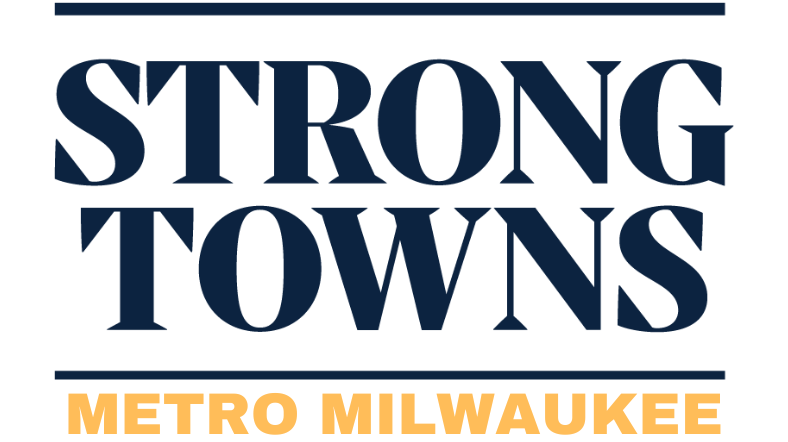Our Stories Pt 2: Car Free
Black Cat Alley on Milwaukee’s East Side
What motivates members of our local conversation to take time out of their busy lives to advocate for a strong town?
We have stories.
—————————————
There is exactly one city in the United States where being car free is more likely than not, and it’s New York. In Milwaukee, around three quarters of households have at least one automobile. That makes this member of our Local Conversation something of an outlier.
ST: Hi there. What’s your name and where’s home?
E: Hi, I’m Evan and I live on Milwaukee’s East Side.
ST: You sought to live in an urban environment. Where was that seed planted?
E: When I was first looking for apartments, the goal wasn’t about the environment as much as it was simply to find somewhere I was comfortable with. I grew up in Fox Point, born at St. Mary’s, got a degree at UWM, and have had family living on the east side in different varieties nearly my whole life. Between visiting family, going out to eat or seeing a film, it was just a place we found ourselves often, so the familiarity was there. It only took two apartment visits, walking around the neighborhood with a different mindset and realizing how convenient it would be to live day to day, before I realized this was where I wanted to be. Despite spending most of my life in a quiet suburban neighborhood, I’m not sure I can go back now.
ST: You live car free in the city of Milwaukee. That's a distinction not many here can claim. How do you do it? How far is your commute? What modes of transit do you use and what are the biggest challenges?
E: When I first started living here, I didn’t think I would be car-free for long. I had worked from home during the pandemic, but back-to-office seemed just around the corner. I had actually taken a few cars for a test drive a week or two after moving in! But for daily necessities, a drug store, grocery store, hardware store and convenience store can cover nearly everything and the East Side has three of each within a 15-minute walk of North Avenue, alone.
Every time I found a transportation problem that I thought might require a car, I’d find a solution that would get around it. When I needed to see a dentist, I realized the one I’d been going to was only 10 minutes by bus. When I needed new clothes and was disappointed with Urban Outfitters’ selection for someone my height, I took an 18-minute ride downtown to peruse Kohl’s. When a movie I wanted to see wasn’t playing at either of the two lovely historical cinemas on the East Side, I realized a bus could get me to The Avalon in Bay View, the recently reopened ACX theater at Bayshore, and the Mayfair AMC out in Wauwatosa. But the [clincher] for not needing a car was the simple addition of a bicycle to my life. I often wonder how many people underestimate, as I did, how little effort a bicycle requires to go distances exponentially further than walking can. The barber I’d been going to for years up in Shorewood is only 10 minutes away on 2 wheels. Work, which had been the main obstacle to being car-free, is a 30 minute straight shot. I’ve biked to the South Shore Beer Garden, Mequon, and even Brewers games. I’ve biked when its sunny or rainy, July or January.
ST: What are you reading? Listening to?
E: My main hobby is video games, so most of my listening is related to that, but the one that isn’t is Citations Needed, a podcast analyzing current and longstanding media & political narratives by looking into their history, origins & results to break down their purpose. On the reading front, I finally started making my way through Jane Jacobs’s 1961 seminal urban planning book, “The Death and Life of Great American Cities.” It’s maybe a bit too on-the-nose for someone being interviewed for Strong Towns considering the long shadow it’s had on urbanism discourse in the 80 years since, but what else would you expect?
ST: Do you consider yourself an activist? Is there a particular issue of interest you dig into?
E: I’m not sure. The extent of my involvement in the issues I care about is mostly discussing things with likeminded folk online & going to public involvement meetings, which doesn’t necessarily separate me from most people’s grandmothers on Facebook. Activism, to me, involves really pushing something in a much more active role and building a platform by yourself or by engaging with others. Part of why I started engaging with Strong Towns was to figure out if I can take that step.
ST: What are your thoughts on Strong Towns (nationally, locally, both?). What can we do better?
E: I believe strongly in the power of grassroots organizing to produce change at the local level, where it is most directly felt. Efforts like Strong Town MKE building bus benches is a great way to be visible in the community in a way that practically improves peoples’ lives when local government and budgetary constraints fail them, and I’m curious on if there’s other ways this type of work could be applied relating to things like making crosswalks more visible and protecting separated bike lanes that often get ignored by drivers looking for free parking. I'd like to see more collaboration with other organizations in the city, both with those that have obviously related goals and interests, and perhaps those we just haven't figured out the common ground yet.
ST: Thanks Evan.


